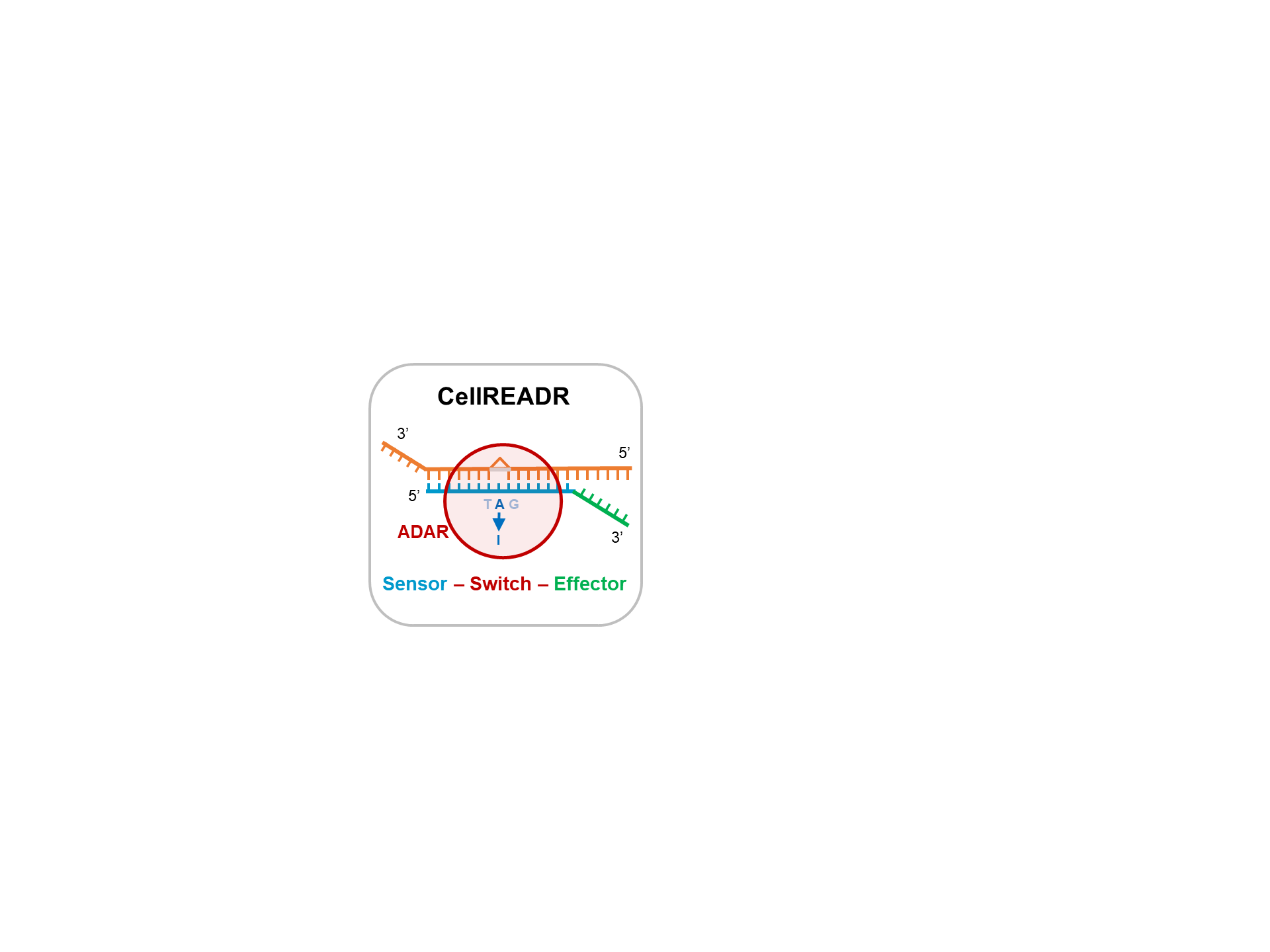CellREADR
Type: Molecular / Cellular,
Keywords: RNA sensors, Cell type, Cell monitoring, Cell manipulation, Programmable

Programmable RNA sensing and payload expression for cell monitoring and manipulation
CellREADR (Cell access through RNA sensing by Endogenous ADAR) is a new class of RNA sensing technology to achieve genetic access of cell types and cell states. It leverages RNA editing mediated by ADAR (adenosine deaminase acting on RNA) to couple the detection of cell-defining RNAs with translation of effector proteins. CellREADR enables monitoring and manipulating of animal cells in ways that are specific, simple, versatile, programmable, and generalizable across organ systems and species.
* As the RNA sensing domain and payload translation domain can be independently and coordinately programmed, CellREADR has exceptionally wide applications in biomedical research and medicine. These include but are not limited to:
* Visualize and monitor cell types or cell states, e.g. by expressing fluorescent proteins or physiological reporter proteins;
* Modulate the physiology and function of cell types, e.g. by expressing ion channels, signaling proteins;
* Reprogram a cell identity, e.g. by expressing master transcription factors;
* Modulate cell-cell interactions, e.g. by expressing cell adhesion molecules or intercellular signaling proteins;
* Eliminate deleterious cells (cancer cells or viral infected cells), e.g. by expressing apoptotic protein or receptors for immune killer cells
Qian, Yongjun et al., (2022) Programmable RNA Sensing for Cell Monitoring and Manipulation, Nature, in press.
Z. Josh Huang, Professor
Department of Neurobiology, Duke University School of Medicine, Durham, NC 27710
TEAM / COLLABORATOR(S)
Yongjun Qian, Postdoctoral Fellow, Department of Neurobiology, Duke University School of Medicine, Durham, NC 27710
FUNDING SOURCE(S)
* NIH 1DP1MH129954-01 (NIH Director’s Pioneer Award)
* NIH 1UF1MH128337‐01

